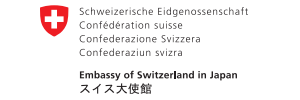Lake Toya
 One of the craters of the 2000 eruption One of the craters of the 2000 eruption
This morning, after breakfast, I went to the start point of the hike, at Toya station, where I met my little walking group. Then we set off, for the 8km walk that would take us through very interesting and unique terrain.
In a nutshell, the little onsen town of Toya, is basically build on the side of a very active volcano, mount Usu. The last time it erupted was 13 years ago, in 2000, and scientists predict the next eruption sometime in the next 15 to 20 years. With every eruption, a new volcano and craters are born, as was the case for Showa Shinzan, a 400m peak born during an eruption in the 1940ies. It is still fuming today.
The onsen town is built next to lake Toya, the 3nd biggest caldera in Japan. It is particularly beautiful because of the group of inner islands (Nakajima) in the middle of the lake. These were formed, as everything else around here by volcanic eruptions a long time ago.
 View of Toya lake and the Nakajim islands View of Toya lake and the Nakajim islands
 Showa Sinhzan - a new mountain born in the 1940s Showa Sinhzan - a new mountain born in the 1940s
A lot of remnants of the last eruption can still be seen, and during today’s walk we passed many of them. The first thing we saw was a kindergarten that was evacuated prior to the eruption, a biscuit factory that was in a very badly hit place near the volcano and - ironically - the fire department, that sunk far into the ground what it gave in. We also saw the remnants of national route 230, that was literally torn into pieces - some now 5 higher - because of volcanic activity coming from below.
 Cookie factory that was destroyed in the eruption of 2000 Cookie factory that was destroyed in the eruption of 2000
 Only 143 years ago, this was national route 230, one of the main ones in the city Only 143 years ago, this was national route 230, one of the main ones in the city
 Probably the earth's only under-water fire station Probably the earth's only under-water fire station
We continued our ascent and saw various craters, some still fuming - if you touch the ground near them it is still very warm as well - while some other turned into lovely blue caldera lakes.
Coming from countries that do not have any volcanic activity, it's really amazing for me to see people living on an active volcano, knowing it will erupt again in the near future. When I asked people about it, they all answered that when the volcano isn't erupting, it gives the the good side of its activity: a gorgeous lake, fantastic hot springs, bountiful fruit and vegetables.
 Craters of the eruption of 2000 - the one in the back is still fuming Craters of the eruption of 2000 - the one in the back is still fuming
In the afternoon I was treated to a boat ride on the lake. The weather was absolutely superb and the water very clear. We went round the islands, which as as lush as they seem to be from afar. We also went to an interesting point of the lake on the other side of the islands, "point zero", where a new island is "growing". It is in fact an underwater volcano, that is slowly rising and will soon emerge. There is still about a meter of water on top of it, but in our lifetimes, a new island will be born!
 The volcanic islands in the middle of Toya lake The volcanic islands in the middle of Toya lake
 Amazing lush vegetation and clear blue waters Amazing lush vegetation and clear blue waters
 Under-water volcano that will soon become an island Under-water volcano that will soon become an island
After the boat ride, we went fruit picking. Japanese fruit being so rare and extremely expensive, what a pleasure to eat so much of it! Thanks to the volcanic soil, the fruit production here is a huge industry. We spent a couple of hours picking (and eating fruit) - I now have a supply for at least a week - happy days!
 Japanese grapes that don't cost 20'000 yen a bunch - hurray! Japanese grapes that don't cost 20'000 yen a bunch - hurray!
 our little helper at the orchard - kawai! our little helper at the orchard - kawai!
|















